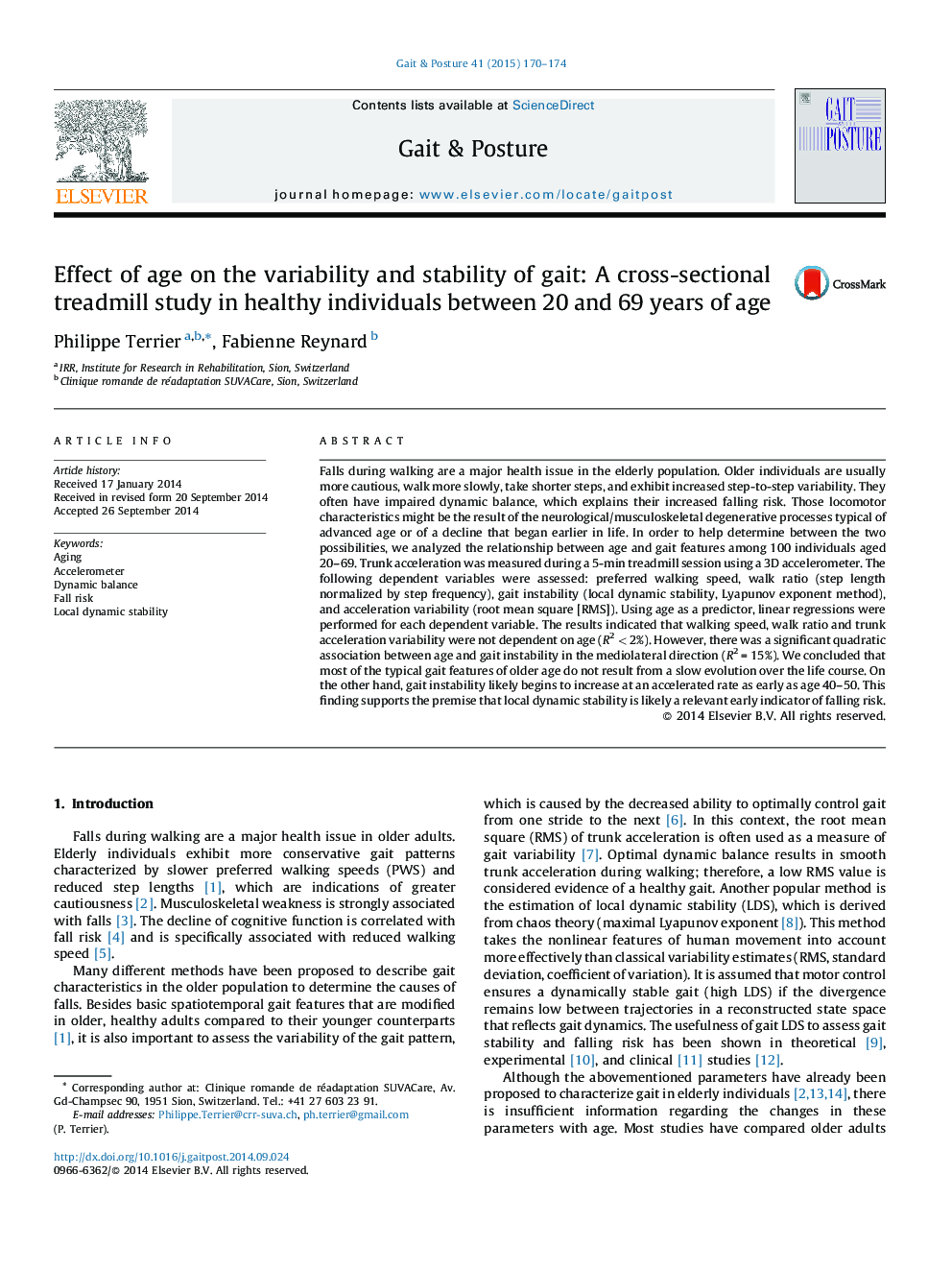| Article ID | Journal | Published Year | Pages | File Type |
|---|---|---|---|---|
| 6205692 | Gait & Posture | 2015 | 5 Pages |
â¢We designed a cross-sectional study to analyze the effect of age on gait features.â¢Trunk accelerometry was used to characterize the gait of 100 healthy individuals.â¢The results show increased instability that begins as early as 40-50 years of age.â¢Lower balance capabilities seen in elderly seem already detectable earlier in life.
Falls during walking are a major health issue in the elderly population. Older individuals are usually more cautious, walk more slowly, take shorter steps, and exhibit increased step-to-step variability. They often have impaired dynamic balance, which explains their increased falling risk. Those locomotor characteristics might be the result of the neurological/musculoskeletal degenerative processes typical of advanced age or of a decline that began earlier in life. In order to help determine between the two possibilities, we analyzed the relationship between age and gait features among 100 individuals aged 20-69. Trunk acceleration was measured during a 5-min treadmill session using a 3D accelerometer. The following dependent variables were assessed: preferred walking speed, walk ratio (step length normalized by step frequency), gait instability (local dynamic stability, Lyapunov exponent method), and acceleration variability (root mean square [RMS]). Using age as a predictor, linear regressions were performed for each dependent variable. The results indicated that walking speed, walk ratio and trunk acceleration variability were not dependent on age (R2Â <Â 2%). However, there was a significant quadratic association between age and gait instability in the mediolateral direction (R2Â =Â 15%). We concluded that most of the typical gait features of older age do not result from a slow evolution over the life course. On the other hand, gait instability likely begins to increase at an accelerated rate as early as age 40-50. This finding supports the premise that local dynamic stability is likely a relevant early indicator of falling risk.
